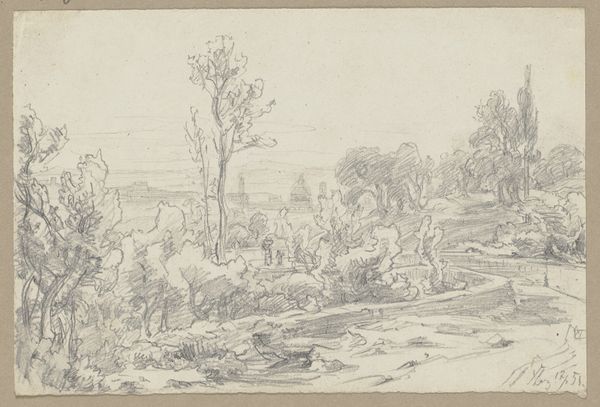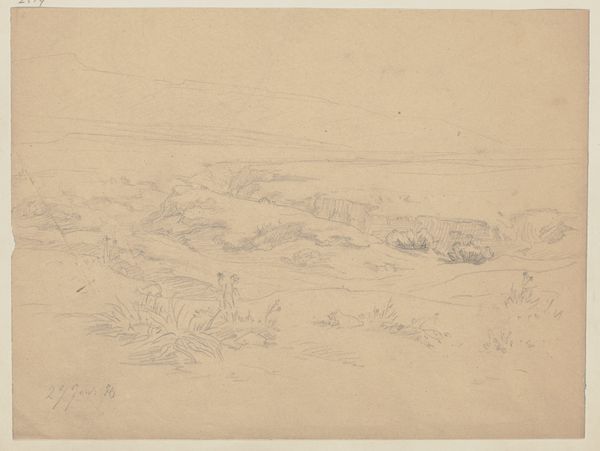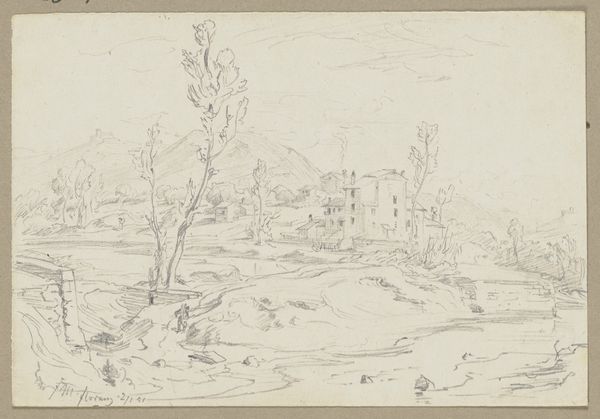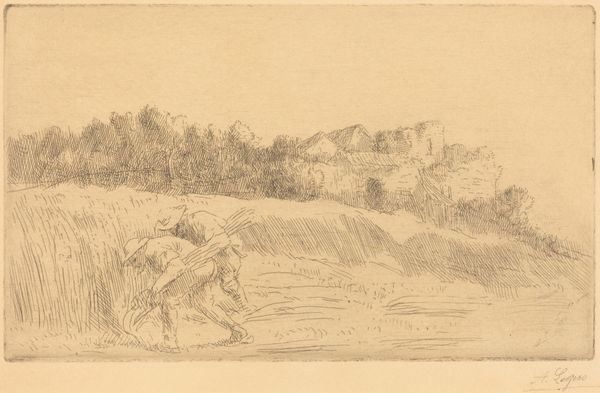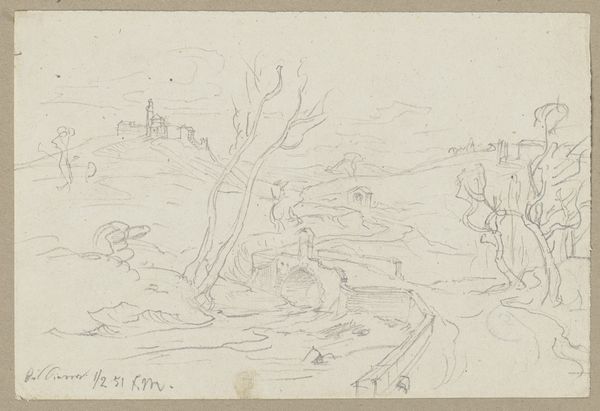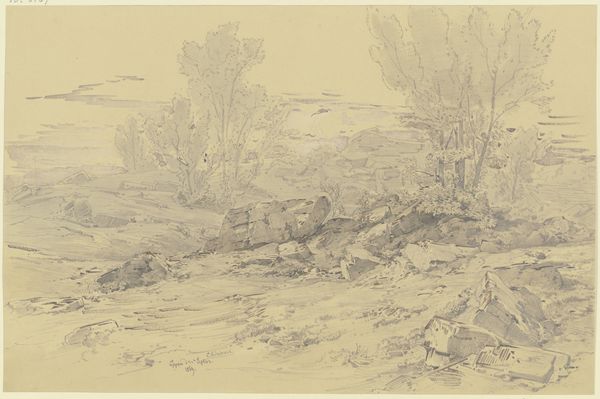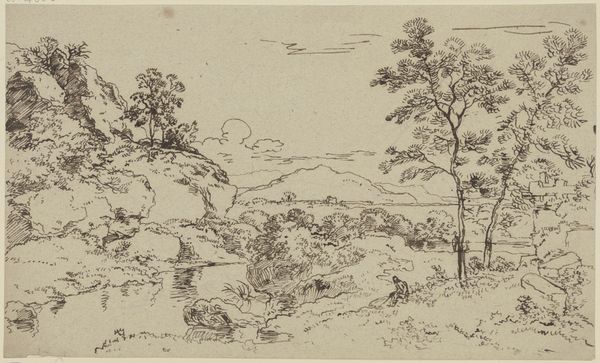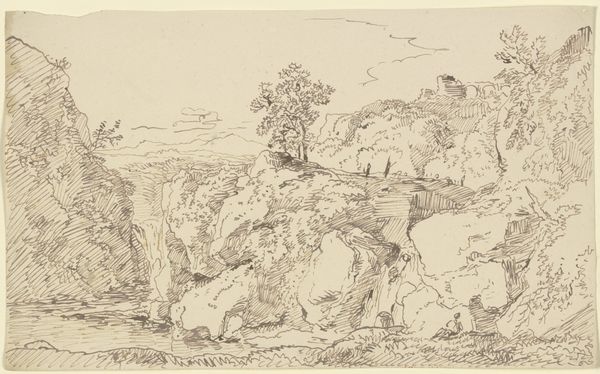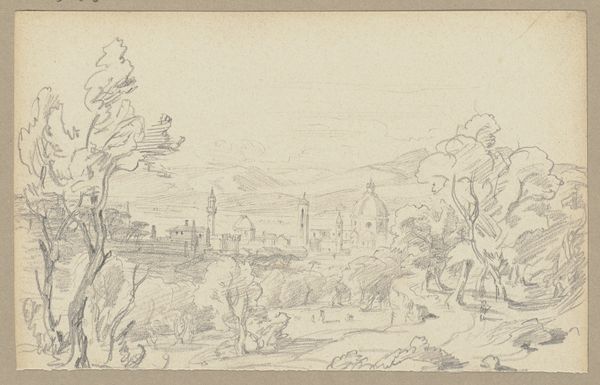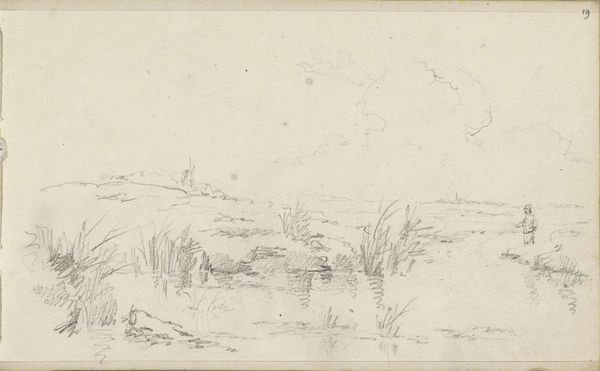
Copyright: Public Domain
Curator: Friedrich Metz created this pencil drawing, titled "Path to Fiesole", in 1851. It's part of the Städel Museum's collection. Editor: Immediately, I’m struck by how incredibly detailed it is, even though it’s just pencil on paper. The textures in the rocks and water, especially, feel very tangible. It almost has the air of a quick field sketch but possesses incredible depth. Curator: It's quite characteristic of the Romantic landscape tradition. Artists were often drawn to specific locations like Fiesole for their historical or aesthetic resonance, which ties into broader cultural ideas. Italy held a strong appeal, signifying a link to classical civilization and natural beauty, essential components of the Romantic artistic and literary imagination. Editor: Exactly! Looking at those carefully rendered rocks, I start wondering about the materiality of his artistic process. Was this a readily available pencil, perhaps locally produced, and how might its specific graphite composition have influenced the nuances of shading and line? The roughness of the paper texture surely plays a part, too. Curator: Absolutely, and it’s essential to note how artists like Metz contributed to a broader visual culture. His work served not only aesthetic ends but also fed into a rising public interest in travel, landscape, and a reimagining of historical narratives through visual imagery. These images would have circulated through prints and exhibitions, thus educating and shaping public taste and perception. Editor: That’s true, and seeing how detailed the rendering is makes you think about Metz’s labor itself. It prompts thoughts about art education systems of the period too; his commitment to accuracy is quite stunning, especially given the challenges of capturing shifting light or water movement. He was literally producing value with his own hands. Curator: It makes you wonder about the intended audience. Was this drawing meant for public display or perhaps more for a private collection? How did such landscape depictions function within the burgeoning art market and how were they valued? These drawings became part of a growing culture that valued experiencing locations via art, whether accessible to all or not. Editor: True. And on that front, if he sought out specific pencil grades or paper types it means consumption within art extended beyond mere creation. Sourcing those specific raw materials involved supply chains and economic systems extending his creative act beyond the simple sketch itself. Curator: I’m inclined to consider “Path to Fiesole” not merely as an aesthetic landscape, but as an artifact that carries a rich socio-cultural encoding reflecting both artistic aspiration and public engagement with landscape depictions of historical importance. Editor: From a materialist perspective, the work becomes even richer: an examination of its creation gives rise to bigger ideas about labor, access, and economic forces present during the making of the drawing.
Comments
No comments
Be the first to comment and join the conversation on the ultimate creative platform.

